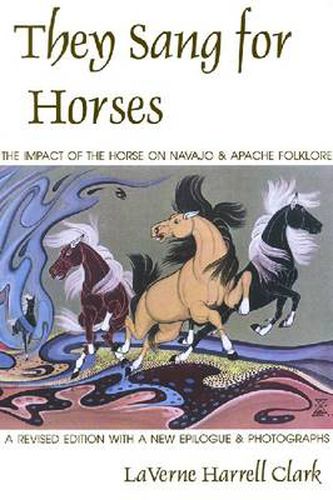Readings Newsletter
Become a Readings Member to make your shopping experience even easier.
Sign in or sign up for free!
You’re not far away from qualifying for FREE standard shipping within Australia
You’ve qualified for FREE standard shipping within Australia
The cart is loading…






First published in 1966 and now considered a classic, THEY SANG FOR HORSES remains the only comprehensive treatment of the profound mystical influence that the horse has exerted for more than three hundred years. In this completely redesigned and expanded edition, LaVerne Harrell Clark examines how storytellers, singers, medicine men, and painters created the animal’s evolving symbolic significance by adapting existing folklore and cultural symbols. Exploring the horse’s importance in ceremonies, songs, prayers, customs, and beliefs, she investigates the period of the horse’s most pronounced cultural impact on the Navajo and the Apache, starting from the time of its acquisition from the Spanish in the seventeenth century and continuing to the mid-1960s, when the pickup truck began to replace it as the favoured means of transportation. In addition, she presents a look at how Navajos and Apaches today continue to redefine the horse’s important role in their spiritual as well as material lives.
$9.00 standard shipping within Australia
FREE standard shipping within Australia for orders over $100.00
Express & International shipping calculated at checkout
First published in 1966 and now considered a classic, THEY SANG FOR HORSES remains the only comprehensive treatment of the profound mystical influence that the horse has exerted for more than three hundred years. In this completely redesigned and expanded edition, LaVerne Harrell Clark examines how storytellers, singers, medicine men, and painters created the animal’s evolving symbolic significance by adapting existing folklore and cultural symbols. Exploring the horse’s importance in ceremonies, songs, prayers, customs, and beliefs, she investigates the period of the horse’s most pronounced cultural impact on the Navajo and the Apache, starting from the time of its acquisition from the Spanish in the seventeenth century and continuing to the mid-1960s, when the pickup truck began to replace it as the favoured means of transportation. In addition, she presents a look at how Navajos and Apaches today continue to redefine the horse’s important role in their spiritual as well as material lives.